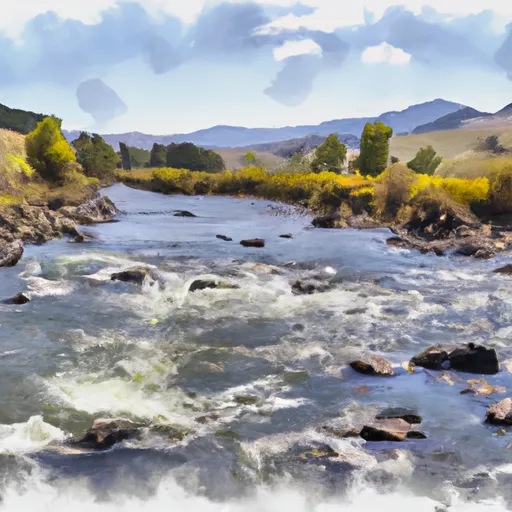Summary
Total streamflow across the
Beaverhead River
was last observed at
479
cfs, and is expected to yield approximately
950
acre-ft of water today; about 114%
of normal.
Average streamflow for this time of year is
421 cfs,
with recent peaks last observed
on
2011-10-21 when daily discharge volume was observed at
2,117 cfs.
Maximum discharge along the river is currently at the
Beaverhead River Near Twin Bridges Mt
reporting a streamflow rate of 191 cfs.
This is also the highest stage along the Beaverhead River, with a gauge stage of
4.29 ft at this location.
This river is monitored from 3 different streamgauging stations along the Beaverhead River, the highest being situated at an altitude of 5,279 ft, the
Beaverhead River At Barretts Mt.
River Details
| Last Updated | 2025-11-03 |
| Discharge Volume | 950 ACRE-FT |
| Streamflow |
479.0 cfs
0.0 cfs (0.0%) |
| Percent of Normal | 113.91% |
| Maximum |
2,117.0 cfs
2011-10-21 |
| Seasonal Avg | 421 cfs |
River Streamflow Levels
| Streamgauge | Streamflow | Gauge Stage | 24hr Change (%) | % Normal | Minimum (cfs) | Maximum (cfs) | Air Temp | Elevation |
|---|---|---|---|---|---|---|---|---|
|
Beaverhead River At Barretts Mt
USGS 06016000 |
114 cfs | 0.63 ft | 0 | |||||
|
Beaverhead River At Dillon Mt
USGS 06017000 |
141 cfs | 3.42 ft | -3.42 | |||||
|
Beaverhead River Near Twin Bridges Mt
USGS 06018500 |
191 cfs | 4.29 ft | -4.5 |
Seasonal Discharge Comparison
Maximum Streamflow Discharge
Streamflow Elevation Profile
The Beaverhead River is an approximately 69-mile-long (111 km) tributary of the Jefferson River in southwest Montana (east of the Continental Divide). It drains an area of roughly 4,778 square miles (12,370 km2). The river's original headwaters, formed by the confluence of the Red Rock River and Horse Prairie Creek, are now flooded under Clark Canyon Reservoir, which also floods the first 6 miles (9.7 km) of the river. The Beaverhead then flows through a broad valley northward to join the Big Hole River and form the Jefferson River. With the Red Rock River included in its length, the river stretches another 70 miles (110 km), for a total length of 139 miles (224 km), one of the more significant drainages of south-western Montana.
The name of the Beaverhead originates from Beaverhead Rock on the middle river. This rock formation was recognized by Sacajawea when the Lewis and Clark Expedition passed the area in 1805. There were also many beavers in the area at the time, but the name does not originate from the animal. In 1805, Captain Meriwether Lewis traveled up the Jefferson and Beaverhead first, but when the rest of the expedition came, a sign Lewis had left at the confluence of the Beaverhead and Big Hole telling them to follow the Beaverhead had been cut down by a beaver, and the expedition traveled up the Big Hole instead. As a result, the swifter current of the Big Hole swamped two of their canoes before they could travel back down to the confluence.Together with the Red Rock River, the Beaverhead forms the uppermost headwaters of the Missouri River, the longest tributary of the Mississippi River.
The river is a Class I water from the Clark Canyon Dam to its confluence with the Jefferson river for the purposes of public access for recreational purposes.

 Beaverhead River
Beaverhead River